Got a fantastic idea of a product you want to sell online?
Great – you're already on your way to an exciting new career as an entrepreneur.
However, before you can start earning money or attracting customers, you're going to need a crucial tool first – a website builder that you can use to design your presence online.
The good news? There are a lot of options to choose from.
The bad news? That means that you've got a tough decision ahead of you as an entrepreneur.
Two of the most common choices available today are Wix and Weebly. These two ecommerce tools are very similar on the surface, both offering a vast range of marketing tools, excellent reputations, and plenty of customer support. Additionally, both industry leaders have a lot of capabilities that you can use to build your online store, start blogging online, and even spread the word on social media.
Of course, just as there are a lot of similarities between Wix vs Weebly, there are some significant differences too. Today, we're going to cover how both solutions tack up against each other when it comes to ease of use, website building, SEO, and many other factors.
Comparing Wix vs. Weebly
Deciding between Weebly vs. Wix isn't an easy choice. The builders are very similar, and they come with a wide range of features that are very comprehensive for the average business owner. Overall, we'd say that Wix is probably the best solution for creative business owners that want to build a wide range of unique websites. On the other hand, Weebly is probably the best choice for ecommerce focused companies that need a powerful online store.
Wix |
Weebly |
???? Pros:
???? Cons:
|
???? Pros:
???? Cons:
|
Introducing Wix and Weebly
Let's start with the basics.
Weebly is a website builder that's all about providing excellent ecommerce support in an easy-to-use environment. The solution was founded in 2007 and was purchased by Square – one of the leading merchant companies, in 2018. The business is all about creating and enhancing ecommerce strategies for business owners.
Weebly offers plenty of great features, including a drag and drop environment for building your websites, the option to purchase your own domain and many other offerings too. There are plenty of professional templates to choose from and tons of high-quality capabilities for entrepreneurs.
Wix, on the other hand, is a website builder that comes with artificial intelligence, a live editor, and hundreds of high-level themes to choose from. Wix websites began back in 2006, at a similar time to Weebly. Currently, the company has around 150 million users worldwide.
Wix was designed with the goal if bringing simple and effective design to everyone. Whether you're looking for a custom domain, easy-to-use high-quality themes, or immersive contact forms, Weebly websites have you covered. There's very little learning curve, plenty of SEO tools, and a host of plugins to explore too.
Wix vs. Weebly: Pricing and Affordability
When it comes to designing your own website, there are a lot of things you're going to need to think about. For instance, does the website builder have the drag and drop design strategy you like, a range of plugins to explore, and a mobile version available? However, before you can start worrying about the ecommerce features your site builder offers, you'll need to see whether the software fits with the budget in your business plan.
The cheapest version of Weebly is the “free” option, which allows users to access a few basic features like free SSL security and up to 500MB of storage. However, you will need to make do with Weebly branding all over your website. You also don't get any ecommerce features at all.
The next step up is the “Connect” package, which starts at $8 per month. Once again, you get a handful of features here, including the option to connect a custom domain. However, there are no ecommerce features until you upgrade to “Pro” or “Business.”
The Pro Weebly plan is valued at $12 per month or $144 per year. You get a vast number of features in exchange for this price, including a shopping cart, and the option to accept payments from customers via Square. There's also access to advanced site stats, a phone support line, and more.
If you upgrade to the Business plan for $25 per month, then you also get shipping diagnostics, pop-up notifications, advanced ecommerce statistics, and a lot more tools to help you run your website overall.
The most advanced plan from Weebly is the Business Plus option, which comes with a free domain, Google Ads credit of $100, and an email marketing tool list. You'll also get access to shipping discounts, abandoned cart emails and a host of other features that makes selling online much easier, for a low price of around $38 per month.
So, how does Wix compete?
Well, first of all, you get a lot more pricing options with Wix than you get with Weebly.
There are 8 price packages to choose from in total, including:
- Combo plan: $13 per month when paid yearly
- Unlimited: $17 per month paid annually
- Pro plan: $27 per month when paid annually
- VIP plan: $39 per month annually
- Business basic plan: $23 per month paid yearly
- Business unlimited plan: $27 per month paid annually
- Business VIP plan: $49 per month paid yearly
- Enterprise plan: $500 per month
One thing to keep in mind here is that the payment plans from Wix don't include VAT, so you'll need to think about that separately. If you're looking for business-level performance, then you're going to need things like VIP, or one of the four business plans. The VIP plan, for instance, comes with 20GB of storage, unlimited bandwidth, the option to connect your domain, and a professional logo.
Personally, we think that the Business and ecommerce plans are the options best suited to customers who want to build a company online. Remember, you can get the Connect plan from Wix for around $5 per month – but that's still not as cheap as the free option that you get from Weebly. The Connect plan from Wix also comes with branding from Wix, so you can't get the fully professional image that you might be looking for.
However, while Weebly might offer you the option to get started for free, it's definitely Wix that stands out as the option with the widest variety of options to choose from for different kinds of business owners.
Keep in mind that with Wix, the pricing system is designed to reward clients who stick with the company for a long period. You get significant reductions in your pricing if you pay for your website on a yearly or bi-yearly basis.
Here's what you need to know about Wix and Weebly's pricing:
- Wix no longer offers a free plan while Weebly does.
- The lowest pricing tier for Wix is similar to the free option from Weebly as it includes branding.
- Wix allows you to cancel your chosen paid plan within 14 days for a full refund – no questions required. Weebly gives you thirty days to cancel without a penalty
- Both Weebly and Wix need you to pay for your domain name within the first year, and Weebly charges a little more than Wix for that.
- Both Weebly and Wix ask you to pay for an email account with your website.
Wix is probably the best option pricing wise, simply because it gives you a wider range of choices for a lower price overall. Though Weebly might seem cheaper at first glance, it won't be if you need things like an Ecommerce shopping cart to get you started.
Wix vs. Weebly: Features
While a great price for your website builder is excellent, it doesn't mean much if you can't get the features that you need. The best website builder will always be the one that can offer you everything from Ecommerce site creation to search engine optimization, unlimited storage, chat support, and even an in-built app store.
On the surface, Wix and Weebly are very similar creations. They're both drag and drop website builders, which means that they're very easy to use and excellent for giving you room for customization. The main difference is that Wix seems to focus on offering a host of different opportunities for whatever you want to do with your website, through plugins and third-party apps. On the other hand, Weebly is more focused on eCommerce, perhaps because it's owned by Square.
The first thing you should keep in mind when you're comparing your options from Weebly and Wix is that neither tool is a website builder and nothing else. Depending on the premium plan that you choose, you'll also get things like Google analytics, an SSL certificate, website protection, and domain name, and web hosting.
Weebly offers unlimited storage space and bandwidth on everything but its free plan, and each project allows for the creation of up to 10 websites with hundreds of add-ons available.
Wix only offers unlimited bandwidth as part of your Ecommerce experience if you're paying $14 per month or more. Storage is limited with all plans, but you can connect your own domain or use a free one for up to a year without paying.
Both Wix and Weebly also offer a host of SEO features, which allow you to improve your visibility on the search engine result pages and boost your chances of sales. Weebly does have slightly more advanced features to offer in the SEO world, with things like HTML coding that you can use to work on the back-end of your site.
Additionally, one feature you may need to keep in mind when you're comparing Wix vs Weebly is the option to build multi-lingual sites. This option is available with all packages from Wix; all you need to do is add the languages that you want to use.
While Weebly sites will also come with multi-language options, they're only available for an extra $3 per month, which means that you might have to spend a little more overall.
Many of the features that Wix and Weebly offer are very similar, but there are some distinct areas where one stands out over another. For instance, if you want to access a mobile app, then you can get this option with both companies, but it's only Weebly that provides a vast selection of features and tools that you can use to adjust your web pages from the mobile app. The Wix mobile app is just a tool for managing content.
If you're looking for simplicity above all else, Wix does seem to be the option of choice. However, in terms of value and scalability, Weebly has a lot more to offer for powerful eCommerce.
Wix vs. Weebly: Ease of Use
The price you pay for things like unlimited bandwidth, SSL, and social media integrations with your website builder premium plans is essential. However, there's more to building out the perfect website than price alone. You'll also need to think about which tool is going to be easiest to use for you and your team.
One important point to note is that both Weebly and Wix have a ton of built-in features to explore, and they're excellent for easy of use. Wix also pushes out a bunch of new updates on a very regular basis, so you can make sure that you're always up to date.
Let's look at how each website editor supports ease of use on a closer level:
Customization options:
Weebly offers a range of excellent editing tools, including a drag-and-drop builder, video backgrounds, custom headers, and the option to create contact forms, surveys, and so much more. Wix, on the other hand, offers similar features when it comes to things like video backgrounds, and customization tools. With Wix you also get things like maps, contact forms and testimonials, scroll effects and unlimited fonts.
Both Wix and Weebly are fantastic at offering up-to-date editing tools that make it easier for you to design an Ecommerce site that rivals the options from WordPress and Squarespace. Wix does have a few more options to choose from, including the ability to enhance the images that you use on your website. You can also finetune styles, fonts, and colors as you see fit.
Of course, when you have a lot of features to play with, there's always a slight concern that you could get overwhelmed and end up breaking your site's functionality. However, Wix makes sure that you stay safe by providing a global undo button and a site history feature.
Weebly, on the other hand, has the benefits of a relatively simple interface. Because Weebly is owned by Square, you also get the benefit of knowing that you can track and manage your inventory easily – even if you decide to launch a pop-up store in person.
Weebly takes ease of use outside of the digital world and gives you the option to sell offline and online with peace of mind. You can create coupons, and gift cards with an in-built system within your editing environment, design product search systems and badges, and even feature customer reviews on your website. There's also the option to accept payments with a host of tools, including Square, Stripe, and PayPal, and there's an automatic tax calculator too.
Wix is probably the much better option for companies who are looking for an advanced range of customization features to explore. However, if you're a beginner that just wants to make sure that you can sell things quickly and effectively online, then Weebly is likely to be the choice for you.
Wix vs. Weebly: Design and Flexibility
Speaking of ease of use, it's essential to consider how both Wix and Weebly approach things like website design and management.
When you purchase and build a website using a tool like Wix, you have absolute control over your design for your home page, your product pages, contact store, and everything else that you can think of. You get the option to add video animations and pictures in your background. What's more, if you want to be able to get started as quickly as possible, you can simply choose a template according to your industry and work from there.
Wix gives you the option to edit as many elements of your website as you like, with things like “Pixel Perfect” editing, where you can place items wherever you like, even if that might make your content a little harder to navigate at first glance.
Both Wix and Weebly offer a lot of beautiful websites to choose from. However, it's worth noting that Wix's library is incredibly large, with hundreds of choices to browse through. There are also specific designs depending on the kind of company you run. The only downside is that you can't change your template with Wix without losing all the content and having to start again.
On the other hand, with Weebly, you have the freedom to change your template whenever you like without losing information. Additionally, while Weebly's selection of themes is smaller, it still has a lot to offer in terms of trendy design
While Wix has more templates to offer, Weebly gives you more freedom to adapt your design whenever and however you choose.
Another point to keep in mind when it comes to design for Wix vs Weebly is that Wix gives you the option to choose exactly how your site is going to look on a smartphone. Additionally, Weebly ensures that all of its sites are designed to work perfectly on mobile devices without any awkward tweaking and changing.
Wix vs. Weebly: Ecommerce
So how do things look for Weebly vs Wix when it comes to ecommerce and creating your online store? Well, while both options offer high-quality tools for building your small business website, it's worth noting that the pro plan you choose will have an impact on the features that you get.
In general, Wix allows you to develop a robust online store where you can sell both digital and physical goods. You can also optimize your product descriptions for search, and accept payments using everything from PayPal to Stripe.
Wix also offers customer accounts where you can ensure that repeat customers can easily buy the items that they love from your store.
Weebly provides a very similar experience when it comes to Ecommerce selling. Because the tool was recently purchased by Square, it actually provides a much deeper focus on Ecommerce than Wix does. You can easily create a storefront and import product lists from the Square POS within a matter of moments. There's also the option to sell a host of digital products and physical items side-by-side.
SEO fields are available for all the items that you list on your Weebly website, and there are no problems with calculating tax because everything comes with an automatic sales tax calculator built-in.
Like Wix, Weebly is pretty impressive when it comes to accepting payments, too, with options to take payments through Square POS solutions, as well as PayPal and Stripe.
Wix vs. Weebly: SEO and Blogging
Being able to take payments and sell products online is only one part of building a small business. You'll also need something that you can use to attract people to your website and get them to buy things. Both Wix and Weebly, fortunately, come with a host of SEO and blogging options.
Both Wix and Weebly allow you to set redirects, URL names, meta descriptions, and titles. Unfortunately, Wix does have a habit of changing file names to something complex and cryptic, which is a bit of a problem for search engine optimization. On the plus side, you can edit your SEO from the Wix mobile app.
As mentioned before, Weebly does offer some basic options for Search Engine Optimization, but the site focuses more aggressively on ecommerce than anything else. On the plus side, there is the option to add site search to your website to help your customers find what they're looking for.
Additionally, it's worth noting that both Wix and Weebly offer blogging features that allow you to build your presence online by publishing content frequently. Both Wix and Weebly have made significant improvements to their blogging options over recent years, perhaps to help them stand out against the likes of Squarespace and WordPress.
Weebly offers slightly more in the blogging department, although it still isn't quite as good as Squarespace or WordPress. However, the only reason that Weebly stands out is that the Wix blog editor isn't integrated into the remaining site builder. The solution appears in an external window which feels quite bizarre if you're used to an option like WordPress.
Weebly also allows you to create more complicated environments for your blog posts, along with add-ons like forms, image galleries, and more.
Wix vs. Weebly: Speed, backup and restore
As mentioned above, the back-end and what you can do with your website is very important when it comes to building an effective presence online. When you're choosing from Weebly vs Wix, remember that you're not just getting a website builder, you're also getting domain names and hosting too. That means that server performance and maintenance are crucial.
On average, Weebly's server uptime is excellent at around 99.97%. However, the response times improve on a monthly basis. Alternatively, Wix offers an exceptional uptime of around 99.99%, which makes it a little more reliable than Weebly overall. For small businesses that can't afford their home page or website to go down at any moment, Wix could be the better choice.
Another point to keep in mind is that Weebly allows business owners to download a copy of their own website and store it locally. This can make it a lot easier to protect your content and files. However, the data that you download can't be uploaded back to Weebly's site, which is a bit of a pain.
Alternatively, for backup and restore purposes, Wix offers a fantastic feature called site history functionality. This basically means that your site is tracked, with all changes noted in the backend of your hosting environment. This means whenever you make an update to your small business web page, Wix will save a copy of your website. You can also use a single click to restore your website to a previous moment in time. This is obviously a significant improvement on Weebly's offering, as you don't need to worry about doing your own backups, and you can always restore your websites when you need to.
Wix vs. Weebly: Customer Support and Extensibility
Finally, let's take a look at your options when it comes to customer support and growth options with Weebly.com and Wix.com. Having several channels and solutions for support is crucial for any business owner, as you need to know that there are ways for you to solve problems for your business when and if they arise. For instance, Weebly offers ticket support via email, phone support, and a complete knowledge base full of tools you can use to solve your own problems. The knowledge base does everything it can to cover any questions you might have.
Weebly‘s knowledgebase is packed full of information on various topics, and the data is offered through a host of useful videos, articles, and tutorials. However, the ticket system is pretty helpful if you ever run into any problems too. There's no live chat support, but you'll still get a response pretty quickly, which isn't always the case with competitors like Squarespace and WordPress.
The Wix editor and website builder system also offer an extensive knowledge base, combined with ticket and phone support. The knowledge base here is very impressive too, with plenty of step by step instructions to guide you through your issues, thorough articles and more.
Wix also recently introduced a live chat support function, which is a huge step forward for companies that need to get quick answers to their questions straight away. Both services are very similar from Wix and Weebly, but it's worth noting that Wix is a step ahead with live chat support.
Additionally, it's also a good idea to check out your options to build on your site with new functionalities when you're deciding which website builder to go with. Both Wix and Weebly offer a wide range of third-party apps and tools available through app marketplaces and stores. You can add a bunch of different features to your website like comments, forms and more. It's very similar to using plugins on WordPress or Squarespace.
Wix‘s app market is a little more comprehensive overall than Weebly's, and it comes with a few more high-quality apps designed by the Wix team, such as Wix Restaurants and Wix bookings.
Wix vs Weebly: Conclusion
Both the Weebly and Wix platforms offer a great selection of exceptional services and robust tools to deliver a powerful online site building solution. Although Wix has slightly more to provide its customers, Weebly is excellent for beginners who want to design a fantastic Ecommerce site in a hurry. Wix, on the other hand, is ideal for advanced users who want to create a wide range of pages to help them stand out online. Saying that it's hard to go wrong with either Weebly or Wix if you're choosing an excellent store-building solution. While there are plenty of other options out there like WordPress and Squarespace, Wix and Weebly are still high up on the list of options available to business owners.
Whichever option you choose for your online site, you're sure to get an excellent experience from both Weebly and Wix. Both of these website builders are reliable, affordable, and designed to transform your selling strategies.
The post Wix vs Weebly: Which is Right for Your Ecommerce Site? appeared first on Ecommerce Platforms.
 from Ecommerce Platforms https://ift.tt/2qYJWGb
from Ecommerce Platforms https://ift.tt/2qYJWGb via IFTTT
via IFTTT
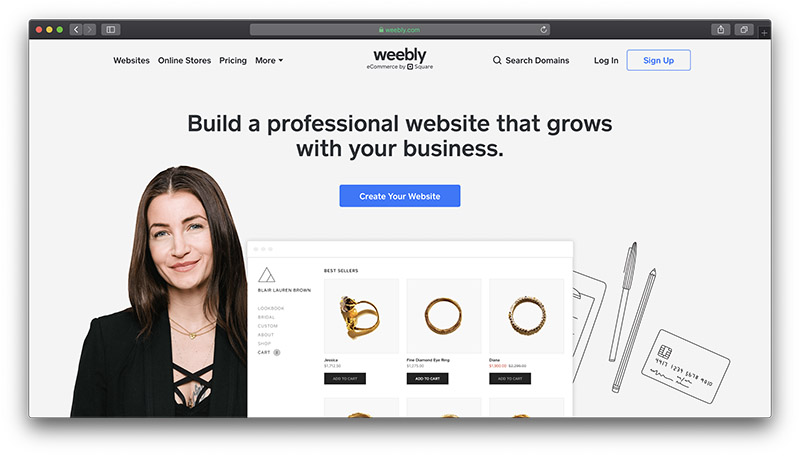


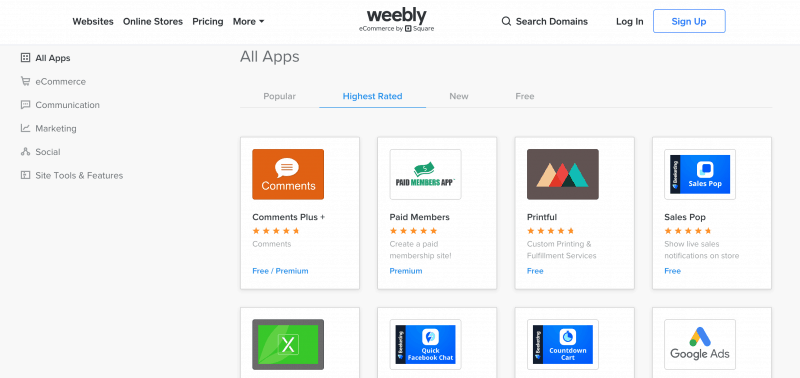
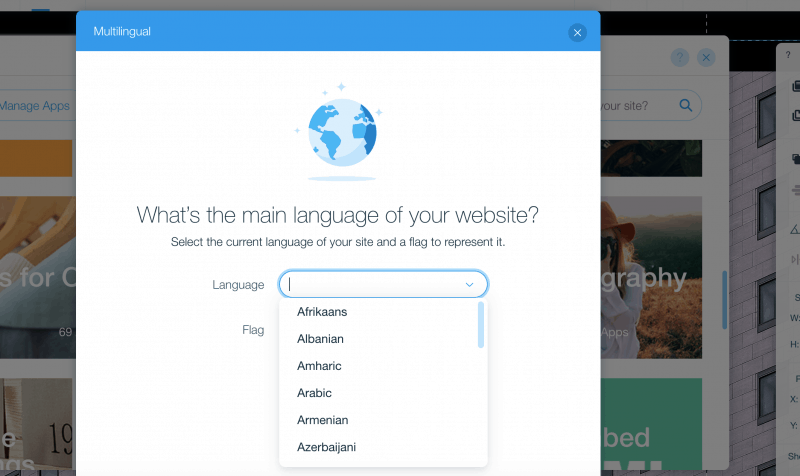





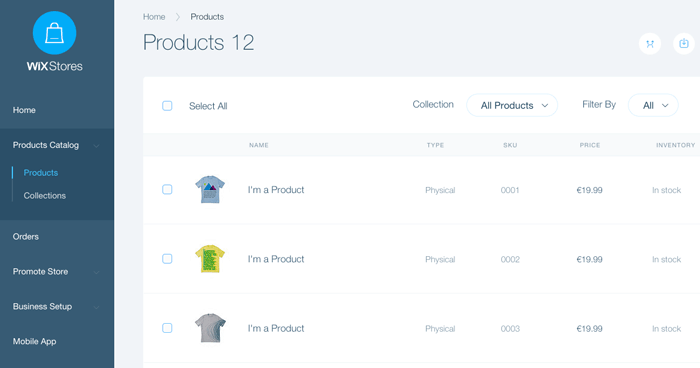
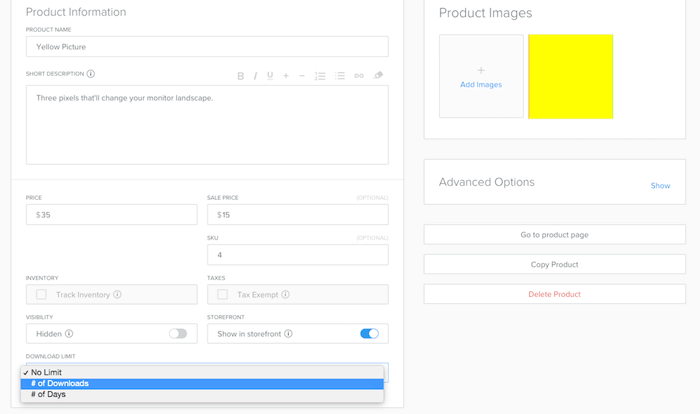

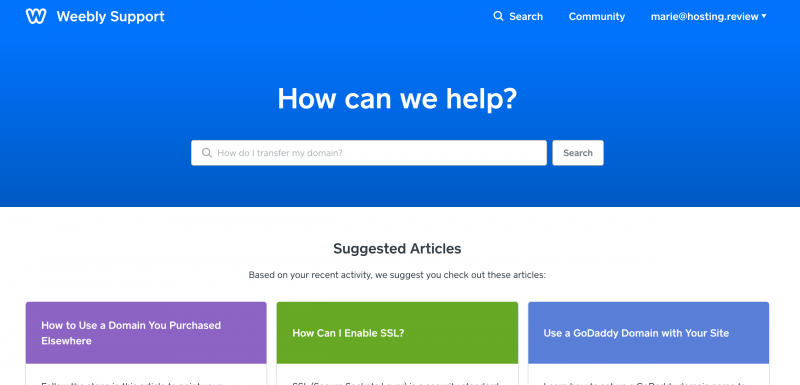




 This is a guest post by Eddie Latham, Co-founder and Director of
This is a guest post by Eddie Latham, Co-founder and Director of 


